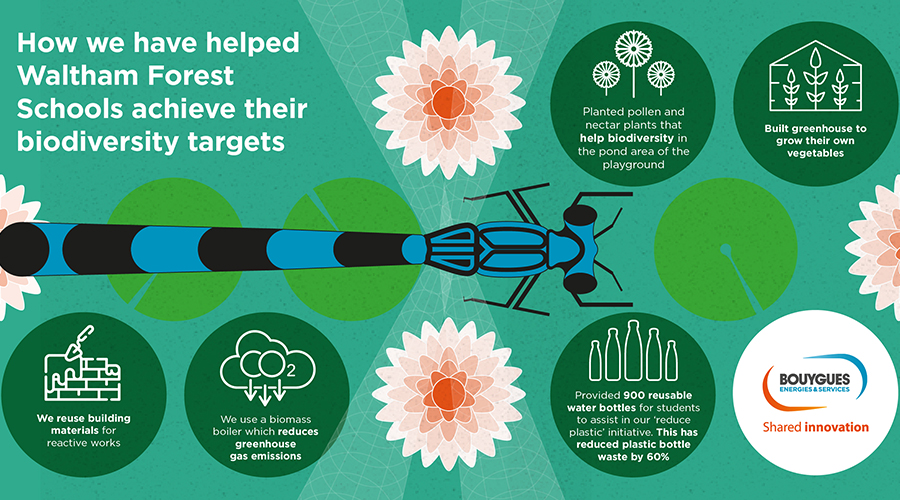Actualité
How are we addressing the problem of bad air quality?
What is the issue?
Bad Air quality is a product of air pollution. Аir pollution is the single greatest environmental risk to human health and one of the main avoidable causes of death and disease globally, with an estimated 6.5 million premature deaths (2016) across the world attributed to indoor and outdoor air pollution.
Air pollution has often been thought of as a problem for those who are already vulnerable: the very old, the very young, and those with existing respiratory problems such as asthma. However, new research shows the problem is much wider. Almost 2,000 locations across England, Wales and Northern Ireland have levels of air pollution above safety limits.
Nitrogen dioxide (NO2) is one of the most harmful pollutant gases, irritating the lungs and potentially causing breathing difficulties. Road traffic is a big source of this. In the absence of aggressive intervention, the number of premature deaths resulting from ambient air pollution is estimated to be on track to increase by more than 50 per cent by 2050.
So how are we helping to tackle this issue?
Airlite paint
Indoor air quality is of paramount importance given the reduced opportunity for dispersion. Many of our contracts are in sectors where indoor air quality is essential, particularly healthcare and education and it’s therefore a top priority for us. This is why we chose to partner with Airlite.
Airlite is an innovative and environmentally-friendly paint that actively purifies the air. Airlite copies nature to break down pollutants, acting as a catalyst, rather than absorbing or filtering them out. We have so far used Airlite at 12 of our sites and that number is growing daily. You can see the impressive results of Airlite at one of our London schools here. Watch this space for more Airlite case studies in the coming weeks.
Our low-carbon fleet
Our commercial vehicle fleet has traditionally been made up of diesel and petrol vehicles and, like others, was responsible for large levels of CO2 emissions and noxious tailpipe emissions. A switch to electric vehicles addresses both of these issues and can also help to reduce levels of noise nuisance if our crews are working in residential streets. Improved logistics also reduce our overall mileage, again helping reduce carbon emissions.
Real-time vehicle telemetry allows us to respond more quickly to emergencies and call-outs, making sure the right vehicle attends the job. This means more time working and less time on the road, as well as reducing fuel costs and emissions.
Improved vehicle efficiency also reduces fuel usage and electric vehicles avoid most congestion and parking charges. Best of all, our crews are less tired and stressed.
Defensive driving techniques can help our staff to stay safe and to drive more efficiently. There are also indications that levels of tiredness and stress are also reduced.
Helping to tackle air pollution is of wider benefit to society, especially in urban areas where traffic contributes to poor levels of air quality.
Cycle 2 Work scheme
We offer our employees the opportunity to get a new bike and cycling equipment through our cycle to work scheme.
The scheme is supported by the UK Government to promote cycling and enables employees to save up to 42% on the retail cost of cycles and equipment. The Cycle to Work scheme is a hire scheme, with the cost of the bike and equipment being taken from your monthly salary before National Insurance and Income Tax contributions are deducted.
All employees are eligible to take part in the scheme and the limit has recently been increased to £2000 to make electric bikes obtainable.
Biodiversity
Trees and plants have a remarkable range of traits that can help reduce urban air pollution. They can improve air quality in direct and indirect ways. Indirectly, they can help by shading surfaces and reducing temperatures. If buildings are shaded by trees, it reduces the need for conventional air conditioning, and the emissions of greenhouse gases that come with it. Plus, lower temperatures decrease risk from harmful pollutants.
Plants are often seen as the “lungs” of an ecosystem because they absorb carbon dioxide and emit oxygen. They are also effective at removing particulate matter. PM can come in the form of small particles of organic chemicals, acids, metals and dust, emitted from fossil-fuel-burning vehicles as well as construction sites.
All of our contracts are encouraged to increase the presence of plants and trees and we have developed a toolkit which can assist in enhancing the biodiversity on an existing site.
The toolkit can identify ways to enhance biodiversity based on site conditions and requirements. No specialist ecological knowledge is needed. The tool will also lead to suggested low cost options that might work at the site, for example bird boxes or a “bug hotel”. A small wildflower meadow is a popular option.
Have a look at this infographic on the biodiversity initiatives we have conducted at Waltham Forest Schools:

Not just an environmental issue
Society bears a high cost of air pollution due to the negative impacts on the economy, work productivity, healthcare costs and tourism, among others. The economic benefits of investing in air pollution control cannot be overestimated and, as we have shown, there are cost-effective solutions to address air pollution for both businesses and individuals. In the coming weeks we will talk more about what you can do to help tackle this issue.
Latest news
Find all the topics that make Bouygues Energies & Services news: projects, innovations, public and client events, partnerships, press releases ...
There are no results for this choice


